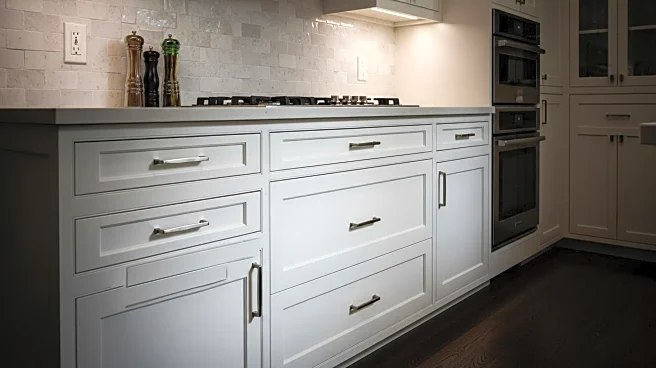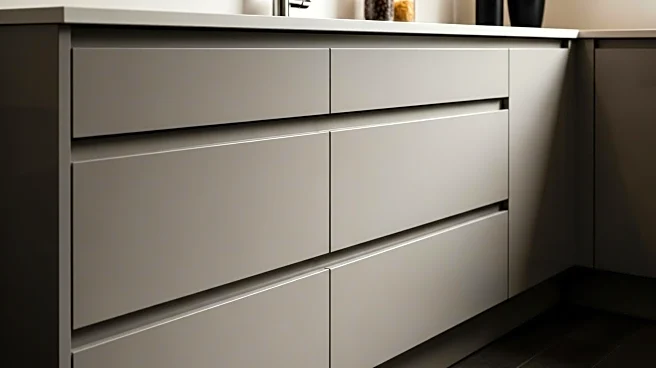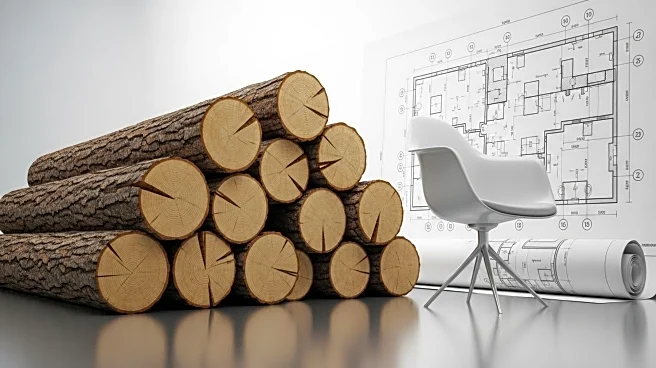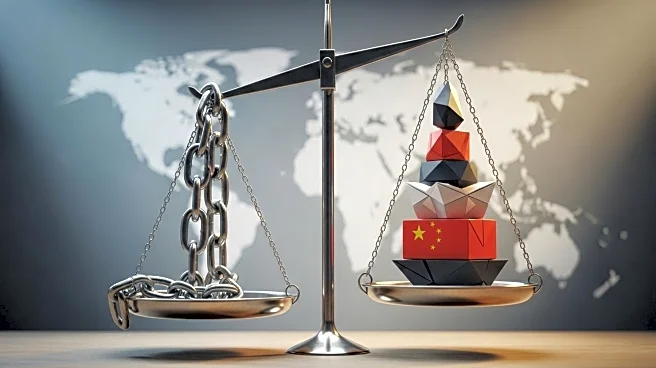What's Happening?
Cabinet dealers, interior designers, and remodeling contractors in the U.S. are facing new tariffs on imported kitchen cabinets, bathroom vanities, and upholstered wooden furniture. These tariffs, which began on Tuesday, are expected to create more business for domestic producers in the long run. However, small business owners in the home improvement industry anticipate short-term challenges, as clients may hesitate to pay higher prices for budget-friendly cabinets. The tariffs, signed by President Trump, are part of a proclamation citing national security and foreign trade practices. Imported vanities and kitchen cabinets face the highest tax rates, with tariffs set at 25% until the end of the year and increasing to 50% starting January 1. Upholstered furniture is subject to a 25% tariff, rising to 30% next year. The tariffs aim to offset the influx of cheap imports from countries like Vietnam, Malaysia, and China, which have impacted U.S. furniture manufacturing.
Why It's Important?
The new tariffs are significant as they aim to boost domestic production and protect U.S. businesses from predatory trade practices. While U.S.-made products are generally of higher quality, they are also more expensive. The tariffs could lead to increased costs for consumers and potentially decrease the variety of products available. Some businesses plan to absorb the tariff-related costs to avoid raising prices, which could hurt demand. The tariffs may also impact the supply chain, as many U.S.-based manufacturers rely on imported materials. The American Kitchen Cabinet Alliance and other trade groups have advocated for these tariffs to support domestic manufacturers. However, the tariffs could strain supply chains and increase costs across the industry.
What's Next?
As the tariffs take effect, businesses are preparing for potential changes in consumer behavior and market dynamics. Some companies, like ACO Denver Custom Cabinetry, anticipate increased interest in American-made products, but they are concerned about managing a potential surge in demand. The tariffs may lead to a reduction in product variety as importers focus on bestsellers and high-margin items. Companies that rely on imported materials may face challenges in finding suitable domestic alternatives. The industry will need to adapt to these changes, balancing the benefits of increased domestic production with the challenges of higher costs and supply chain adjustments.
Beyond the Headlines
The tariffs highlight the complexities of global supply chains and the challenges of protecting domestic industries in a globalized economy. While the tariffs aim to support U.S. manufacturers, they may inadvertently increase costs for businesses and consumers. The impact on product variety and consumer confidence could have long-term implications for the home improvement industry. The situation underscores the need for businesses to communicate effectively with consumers about how these changes affect pricing and product availability.











